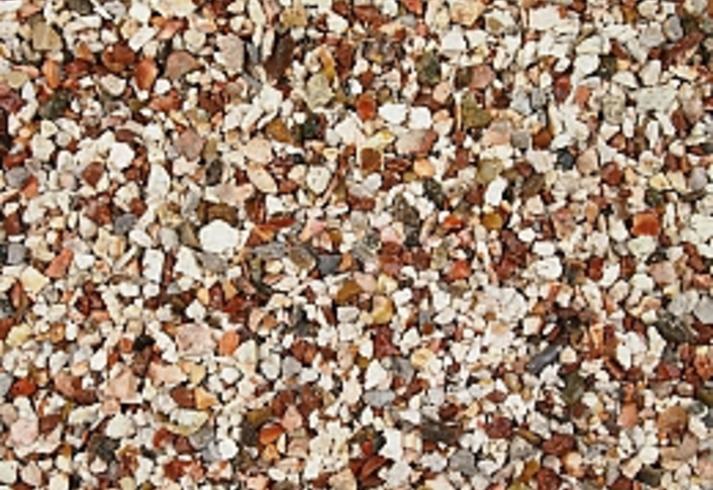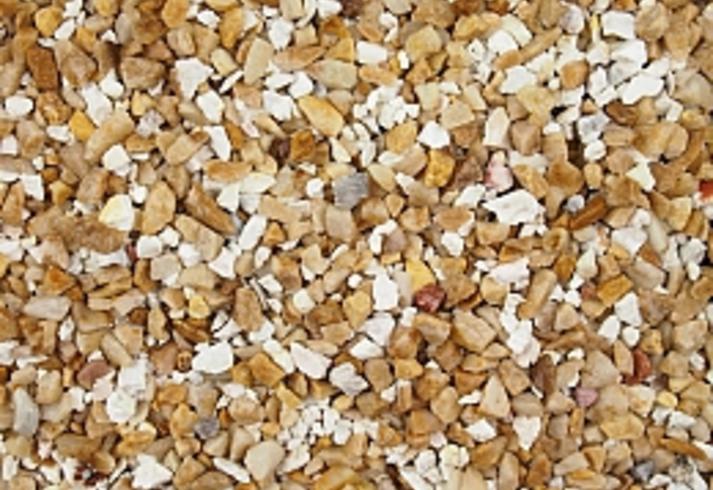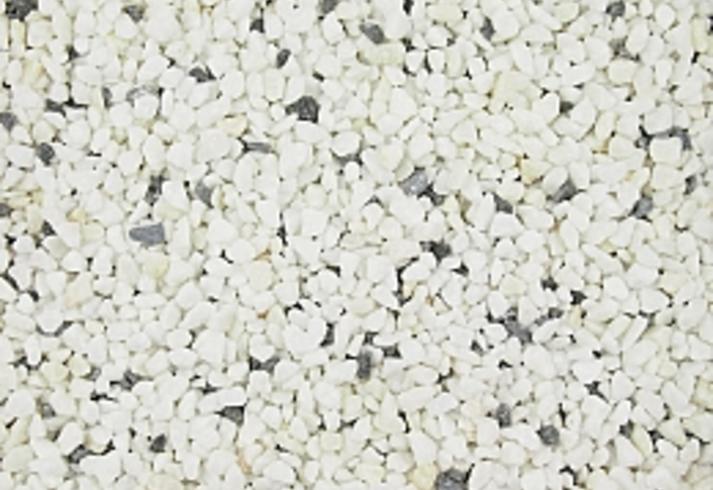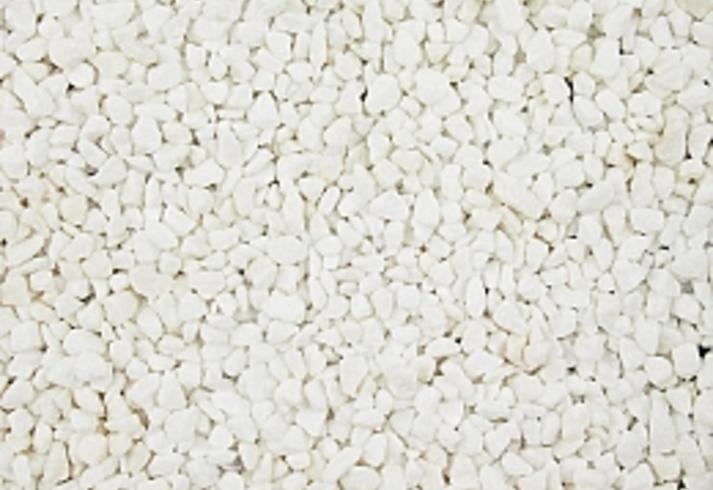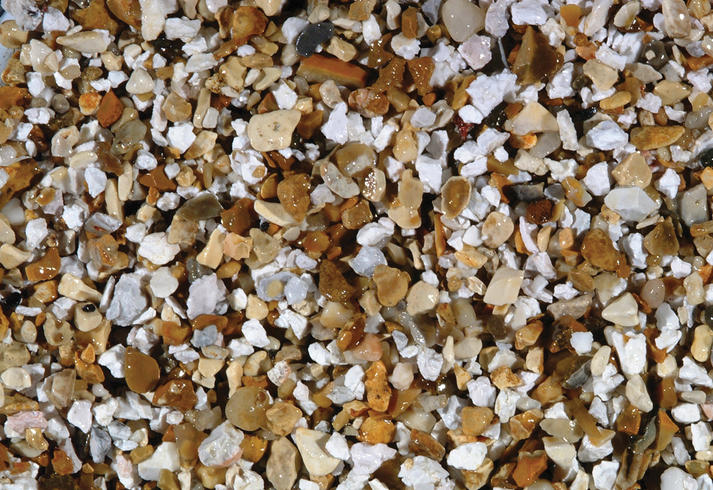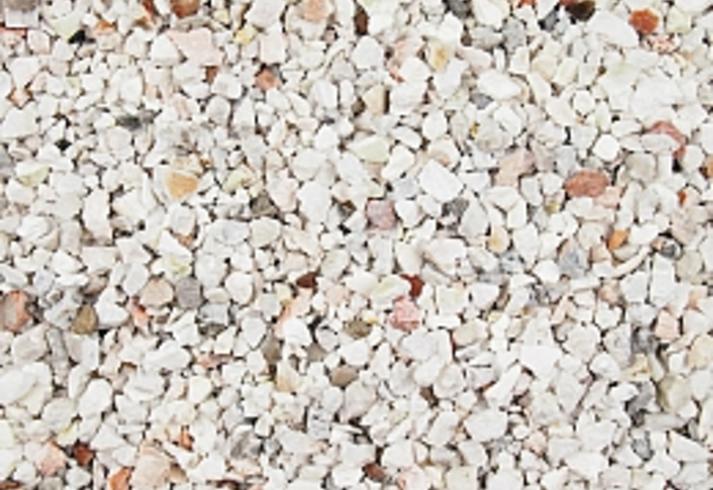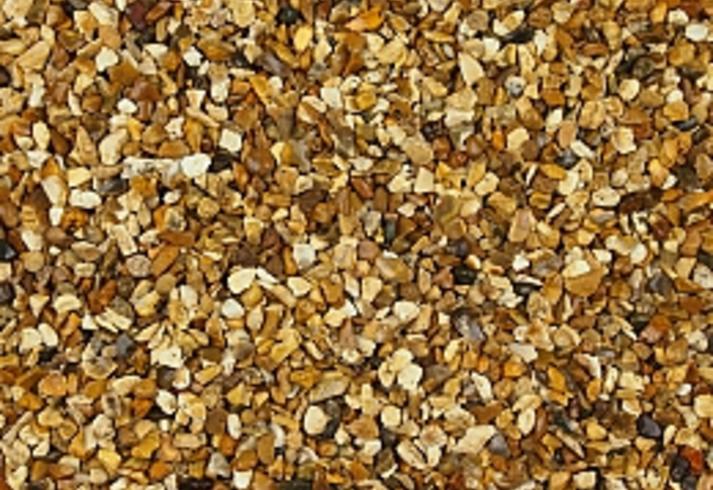Preparing for Pebbledash
Handling
All aggregates used for dry-dashing should be supplied in sealed polythene bags that comply with the manual handling regulations. Loose or bulk bagged material should not be used for dry-dashing. Applicators that use this method do so at their own risk. This is due to the possible contamination of the product prior to or during application.
The segregation of fines to the bottom of bulk bags or loose loads will create an inconsistent finish given that the fines cannot be distributed equally and this can lead to an inconsistent and patchy finish when applied. In accordance with BS EN 13914-1:2005, aggregates should be stored separately, according to type, on clean hard dry ground that is well drained and protected from contamination by soil, falling leaves or other harmful materials.
Special non-standard aggregates mixes should be obtained in sufficient quantities at one time to enable material of the approved colour to be used for the whole of the work. On larger schemes that involve multiple deliveries natural breaks should be used, for example, another house, corners or different elevations on the same property.
Should the material used require moving from the pallet it is supplied on, care should be taken to prevent over handling. This will cause higher fines content within the bag caused by the attrition of the aggregates within the bag during the handling process. Special care should be taken when transferring the product from the pallet to the working platform or site storage facility to ensure that the bags are not walked on or climbed on at any point prior to their application.
Preparation of Background
Backgrounds to be rendered should be examined for contamination, deterioration, surface roughness, suction and strength. Dust  and contamination such as residues of concrete release agents, gypsum plaster, paint, other coatings, organic growth, salts and efflorescence should be removed prior to rendering. Salts and efflorescence should be removed by dry brushing (non-metallic bristles). Other special precautions may need to be taken if this removal is not achievable.
and contamination such as residues of concrete release agents, gypsum plaster, paint, other coatings, organic growth, salts and efflorescence should be removed prior to rendering. Salts and efflorescence should be removed by dry brushing (non-metallic bristles). Other special precautions may need to be taken if this removal is not achievable.
The line and flatness of the background should also be assessed to determine if the render can be applied to a uniform thickness or if dubbing out is required. The background should be reasonably dry and free of frost, with a temperature of +5 °C or above at the time of rendering or other recommendations by the manufacturer followed. If the suction is very high, low or uneven the use of a preparatory treatment, metal lathing, or special factory made render should have been be considered as part of the design.
It is important for the wall not to be too wet at the time of rendering. Walls that have recently been exposed to heavy rain should be allowed to dry out sufficiently before rendering is attempted. Do not attempt to apply render if any of the materials to be used are frozen or if there is a risk of frost damage before the render has taken an initial set. Do not apply in full sun as normal curing is impossible and fast drying will occur.
been exposed to heavy rain should be allowed to dry out sufficiently before rendering is attempted. Do not attempt to apply render if any of the materials to be used are frozen or if there is a risk of frost damage before the render has taken an initial set. Do not apply in full sun as normal curing is impossible and fast drying will occur.
Appropriate surface preparation is vital for sound trouble free rendering. Examine all surfaces carefully to determine what if any preparation is needed. If practical, try a sample area to establish what will work.
If an area is affected by moss or algae ensure it is removed completely and prevent further growth by killing the spores. Always follow the manufacturers instruction when using any chemical based removal products.
A hammer or tap test can be used to identify areas of loose, hollow or spalling material. Tap testing can be done by simple 'ringing' a painter's scraper (lightly held between finger and thumb) over the wall surface. Defective areas sound dull. Hammer testing uses a chipping hammer on the surface and again a defective area will have a dull sound compared to an area that is sound.
The whole area to be rendered will require testing.
Render Mixes
The most important rule of rendering is that each coat must be weaker (i.e. less cement) and less thick than that to which it is applied.  Not following this rule will lead to problems.
Not following this rule will lead to problems.
There are many variations on mix proportions if hydrated lime is to be used in mixes, the cement/lime to sand ratio should be kept to 1 to 3. In other words lime is considered to be part of the cement content of the mix and by adjusting the proportion of cement to lime the strength can be modified without impairing surface hardness and strength.
A guideline to on-site mixes (as opposed to factory batched mixes) would be as follows:
Rendering onto masonry sub-straight
Scatch coat (first coat)
1 part Ordinary Portland (OP) Cement : 4 parts sand mixed with water and plasticiser and waterproofer as recommended.
Or
1 part OP Cement : 0.5 part hydrated lime : 4.5 parts sand mixed with water and plasticiser and waterproofer as recommended.
Top Coat (for floating or dashing finish)
1 part OP Cement : 5 or 6 parts sand mixed with water and plasticiser and waterproofer as recommended.
Or
1 part OP Cement : 1 part hydrated lime : 5 or 6 parts sand mixed with water and plasticiser and waterproofer as recommended.
Use white cement to make white mortar for top coat if required and always follow manufacturer's instructions for use of plasticisers and waterproofers.
External render should always be applied to a carefully prepared substrate. Always be in two coats to a minimum thickness of 16mm as the long term durability of a render is a function of its thickness. It should be thoroughly scratched between coats and be allowed to dry and shrink completely between coats. These mixes are for guidance only and should not be assumed to represent the extent of variations available.
Pre-Mixed Dash Receiver
Pre-mixed dash receiver products are available that are pre-coloured and require mixing with clean water on site with a paddle mix. These products allow uniformed colours and a mix consistency that cannot be guaranteed using the above cement and sand mixes. Base coats are also available to suit. The product often contains silicone and/or polymer additives to give a stronger bond that is less liable to cracking than a sand and cement mix. This type of product is often described as a self-coloured cementitious render. This type of render would be manufactured as a type 11 material under BS5262:1991. Given the consistency of colour that is often required this type of finish is preferable to a sand and cement mix made up on site. The added polymers bond the finish creating a stronger render.
Contact us on 01629 636500 for any help or technical advice or Contact Us or email sales@derbyaggs.com













